The Wright Brothers Memorial Trophy was established by the National Aeronautic Association (NAA) in 1948 after a trust fund was created in 1936 by Godfrey Lowell Cabot of Boston, a former president of the NAA. It is awarded to a living American for "significant public service of enduring value to aviation in the United States."[1] The presentation of the award is made annually at the Aero Club of Washington, as close as possible to December 17 each year,[2] the day on which, in 1903, the Wright brothers made the first flight in an airplane.[3] The inaugural recipient of the trophy was William F. Durand, "a pioneer in aeronautics, naval propulsion and engineering research methods".[4] Until 2010, winners of the award received a trophy depicting the Wright brothers' Wright Flyer aircraft.[5] From 2010 onwards, a redesigned trophy featuring a silver obelisk and bronze inscription has been awarded.[1]
| Wright Brothers Memorial Trophy | |
|---|---|
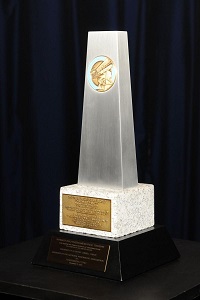 Wright Brothers Memorial Trophy | |
| Awarded for | "significant public service of enduring value to aviation in the United States".[1] |
| Country | United States of America |
| Presented by | National Aeronautic Association |
| First awarded | 1948 |
| Currently held by | Robert Crippen |
| Website | Official website |
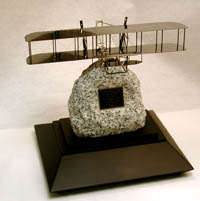
The trophy has been awarded to women on four occasions: Olive Ann Beech, founding partner and president of Beech Aircraft, received the award in 1980;[6] Marion Blakey, former administrator of the Federal Aviation Administration and chairman of the National Transportation Safety Board, was honored in 2013,[7] Colleen Barrett, President Emeritus of Southwest Airlines, was the 2016 recipient,[8] and retired NASA astronaut and USAF pilot Eileen Collins[9] received the trophy in 2022.
List of winners
| Year | Image | Recipient | Notes | Ref(s) |
|---|---|---|---|---|
| 1948 |  | William F. Durand | First civilian chairman of the National Advisory Committee for Aeronautics and prominent propeller designer | [10][11] |
| 1949 |  | Charles Lindbergh | First transatlantic flight (from New York to Paris) in the Spirit of St. Louis, cited for his "long and selfless career in aviation" | [10][12] |
| 1950 |  | Grover Loening | Pioneering aircraft designer who managed the Wright Company, co-founded Pan Am and Grumman | [10][13] |
| 1951 |  | Jerome Clarke Hunsaker | Aeronautical engineering pioneer who developed the first such course at the Massachusetts Institute of Technology, founder of the Institute of the Aeronautical Sciences | [10][14] |
| 1952 | 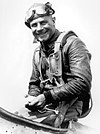 | Jimmy Doolittle | Decorated military aviator who led the first raid on Japan, pioneer in instrument flying and first president of the Air Force Association | [10][15] |
| 1953 |  | John Carl Hinshaw | Member of the United States House of Representatives, cited for "fostering the sound and consistent growth of aviation in all its forms, so that it might become a deterrent to war and that it might increasingly become an important carrier of the people and the commerce of the world." | [10] |
| 1954 |  | Theodore von Kármán | Mathematician and physicist who pioneered theoretical aerodynamics | [10][16] |
| 1955 |  | Hugh Latimer Dryden | Significant research into high-speed aerodynamics, fluid mechanics and acoustics, director of the National Advisory Committee for Aeronautics until the creation of NASA | [10][17] |
| 1956 |  | Edward Pearson Warner | Aeronautical engineer, first president of the International Civil Aviation Organization | [10][18] |
| 1957 |  | Stuart Symington | First United States Secretary of the Air Force | [10][19] |
| 1958 | – | John Frederick Victory | He "exerted a driving influence to advance the progress of aeronautics in America and to promote the public interest". | [10] |
| 1959 |  | William P. MacCracken Jr. | "A pioneer in aviation legislation" and recognised as the first regulator of aviation in the United States | [10][20] |
| 1960 |  | Frederick C. Crawford | Industrialist and business leader who was the chairman of the National Advisory Committee for Aeronautics's Committee on Power Plants for Aircraft | [21][22] |
| 1961 | 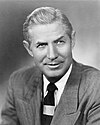 | Mike Monroney | Wrote and sponsored the Federal Aviation Act of 1958 that created the Federal Aviation Administration in pursuit of safer, more regulated aviation in the United States | [21][23] |
| 1962 |  | John Stack | Pioneered research into supersonic flight | [21][24] |
| 1963 |  | Donald Wills Douglas Sr. | President of the Douglas Aircraft Company from 1921 to 1957, which produced the Douglas DC-3, an aircraft recognised as bringing a "new era" of air travel | [21][25] |
| 1964 |  | Harry Frank Guggenheim | Established the Daniel Guggenheim Fund for the Promotion of Aeronautics with his father Daniel Guggenheim, establishing research centers across the United States | [21][26] |
| 1965 |  | Jerome F. Lederer | Pioneer in aircraft safety who led the introduction of the flight recorder to provide insight into air crashes | [21][27] |
| 1966 |  | Juan Trippe | Founder of Pan American World Airways, cited for "public service of enduring value to aviation in the United States" | [21][28] |
| 1967 |  | Igor Sikorsky | Aircraft pioneer whose work resulted in the design and production of the first mass-produced helicopter, the R-4 | [21][29] |
| 1968 |  | Warren Magnuson | United States Senator whose "dynamic leadership in developing national and international policy that has assured United States' preeminence in aeronautics" | [21][30] |
| 1969 |  | William McPherson Allen | Businessman, member of the board at Boeing, cited for "significant public service in the development of commercial airlines, civil and military aircraft" | [21][31] |
| 1970 |  | C. R. Smith | CEO of American Airlines from 1934 to 1968 and from 1973 to 1974, cited for his "significant public service of enduring value in development of military and civil air transportation and for his contributions as a dynamic leader and articulate spokesman for U.S. aviation progress." | [32] |
| 1971 |  | Howard Cannon | United States Senator, cited for "use of aviation, both as a viable national transportation system and as an essential element in maintaining a strong military posture", played a "role in passing legislation that deregulated the airline and trucking industries" | [32][33] |
| 1972 |  | John H. Shaffer | Administrator of the Federal Aviation Administration from 1969 to 1973 "to the benefit and safety of the general public and of all who fly". | [32] |
| 1973 |  | Barry Goldwater | Helped secure the Goldwater–Nichols Act and cited as "serving as an articulate spokesman for American aviation and space in the Congress and throughout the world" | [32][34] |
| 1974 |  | Richard T. Whitcomb | Pioneering aerodynamicist who conceived of the supercritical airfoil concept | [32][35] |
| 1975 |  | Kelly Johnson | Aeronautical engineer who, with the Skunk Works, was responsible for the design of many pioneering aircraft including the Lockheed U-2 and SR-71 Blackbird | [32][36] |
| 1976 | – | William A. Patterson | President of United Airlines from 1934 until 1966, cited for "his contributions to the development of safe and efficient air transportation" | [32] |
| 1977 |  | Ira C. Eaker | Commander of the United States Army Air Forces in Europe in World War II, helped establish the United States Air Force as a separate entity | [32][37] |
| 1978 |  | Jennings Randolph | Cited for his "successful initiation and advocacy of major aviation legislation over more than three decades of service in Congress" | [32][38] |
| 1979 | – | Thornton Wilson | Headed the development of the LGM-30 Minuteman intercontinental ballistic missile, president of Boeing | [32][39] |
| 1980 |  | Olive Ann Beech | Co-founder, president, and chairwoman of the Beech Aircraft Company | [6][40] |
| 1981 | – | Dwane Wallace | President and/or chairman of the board of the Cessna Aircraft Company from 1935 until the 1970s | [40][41] |
| 1982 |  | Willis Hawkins | Designer of the Lockheed C-130 Hercules, cited for "more than 40 years of public service to aviation through technical innovations and management leadership in the design, development, and production of military and commercial aircraft, space vehicles, and advanced missilery" | [40][42] |
| 1983 | 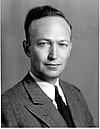 | John Leland Atwood | Chief Engineer/Executive at North American Aviation for more than 35 years, involved in the design of multiple aircraft including the P-51 Mustang, X-15 and the Apollo Lunar Module | [40][43] |
| 1984 |  | David S. Lewis | Aeronautical engineer who was chairman and CEO of General Dynamics, during which time the company produced the F-16, and the Trident submarine and the M1 Abrams tank | [40][44] |
| 1985 | – | Harry B. Combs | Cited for "over half a century of significant and enduring contributions to aviation as a pilot, an industrial leader, an author, and an advisor to government", including creating Combs Aircraft, a company which trained thousands of military pilots during World War II | [40][45] |
| 1986 |  | Joe Sutter | Aeronautical engineer who managed the Boeing design team developing the Boeing 747 and who "contributed significantly to U.S. preeminence in civil aeronautics" | [40][46] |
| 1987 | – | Allen Paulson | Businessman, head of Gulfstream and pilot who set various speed records, cited for his "outstanding and enduring contributions to aviation as a pilot, designer, entrepreneur, industry leader, and employer throughout a career spanning over 40 years" | [40][47] |
| 1988 | – | Sam B. Williams | Pioneered advances in small gas-turbine-engine technologies | [40][48] |
| 1989 | – | Thomas V. Jones | Chairman and Chief Executive Officer of Northrop Corporation, cited for "guiding the development of advanced aircraft, electronic systems, and manufacturing technologies" | [40][49] |
| 1990 | – | Edwin I. Colodny | Chairman of the USAir Group, cited for "a lifetime of meritorious service to air transportation as an airline executive and public servant" | [50] |
| 1991 | – | Benjamin A. Cosgrove | Contributed to the design of "four generations" of Boeing aircraft, cited for "a lifetime contribution to commercial aviation safety" | [50][51] |
| 1992 |  | Jake Garn | Senator, payload specialist on board STS-51-D and cited as "one of the U.S. Senate's most effective aerospace spokesmen and legislators" | [50][52] |
| 1993 | – | Gerhard Neumann | German-born American engineer, cited for "extraordinary achievement, creative effort, and inspired leadership in the design and development of aircraft engines", including designing the world's first nuclear-powered jet engine | [50][53] |
| 1994 | – | Albert Lee Ueltschi | Founder of FlightSafety International Inc. | [50][54] |
| 1995 | – | Russell W. Meyer Jr. | Chairman and Chief Executive Officer of Cessna from 1975, cited for the "advancement of worldwide aviation safety through sophisticated training methods, and use of aviation to deliver state-of-the-art health care to people otherwise deprived of such high quality medical service" | [50] |
| 1996 |  | Frederick W. Smith | Founder, chairman, president, and CEO of FedEx, created in 1971, cited in part for "leadership in the revitalization of general aviation" | [50][55] |
| 1997 | – | Charles Kaman | Pioneer in the development and manufacture of helicopter technology | [50][56] |
| 1998 | – | Edward Stimpson | Dedicated his career to aviation safety, cited in part for his "active involvement in creating career opportunities for young men and women" | [50][57] |
| 1999 | Delford M. Smith | Founder of Evergreen Helicopters, cited in part for his "exceptional achievements in creation of worldwide aviation enterprises" | [50][58] | |
| 2000 | 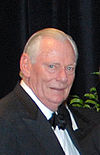 | Herb Kelleher | Chairman Emeritus and former CEO of Southwest Airlines which demonstrated a "revolutionary and successful model for low fares, innovative customer service and employee recognition" | [59] |
| 2001 |  | Neil Armstrong | Cited for "a lifetime of public service as a Navy pilot, a civilian test pilot, a NASA Astronaut commanding Gemini 8 and Apollo 11, the first person to step on the Moon, an engineer, an educator and a business leader" | [59] |
| 2002 |  | Paul Poberezny | Founder of the Experimental Aircraft Association, cited in part for "devoting his life to making aviation accessible to all Americans" | [59] |
| 2003 | 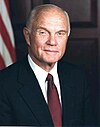 | John Glenn | Cited for "his service as a military pilot, NASA astronaut and U.S. Senator from Ohio. Glenn led the United States' efforts in exploring outer space, becoming the first American to orbit the Earth" | [59] |
| 2004 | 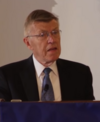 | Robert Crandall | Former president and chairman of American Airlines, cited as "a pioneer following government deregulation of the airlines, and he defined and shaped the industry as it exists today" | [59][60] |
| 2005 |  | Edward C. Aldridge Jr. | The 16th United States Secretary of the Air Force | [59][61] |
| 2006 |  | Norman Mineta | The 14th and longest serving United States Secretary of Transportation, cited in part for "a myriad of lasting accomplishments to the world of transportation and aviation" | [59][62] |
| 2007 |  | Eugene Cernan | Last man to walk on the Moon, cited for "his extraordinary lifetime of achievement as an Astronaut, Naval Aviator, and Ambassador for Aerospace" | [59][63] |
| 2008 | 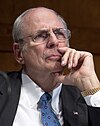 | Norman R. Augustine | Chairman of the Review of United States Human Space Flight Plans Committee, cited for his "legendary and inspirational aerospace leadership in both industry and government" | [64][65] |
| 2009 | – | Steven F. Udvar-Házy | Former chairman and CEO of International Lease Finance Corporation, cited for his "innovative aerospace business practices, improved aircraft design, piloting skills, and selfless philanthropy ensuring preservation of our aerospace history" | [66][67] |
| 2010 |  | Harrison Ford | Actor and pilot, cited for "engaging our nation's youth in aviation and inspiring tomorrow's leaders, innovators and enthusiasts to secure a strong future for all of aviation" | [68] |
| 2011 | 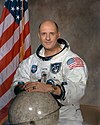 | Thomas P. Stafford | Commander of Apollo 10, cited for "pioneering achievements that have led the way to the moon, to greater international cooperation in space, and to a safer America" | [69] |
| 2012 | – | Robert J. Stevens | Former chairman, president and CEO of Lockheed Martin, cited for "his dedication, leadership, and major contributions to the security of the United States" | [70] |
| 2013 |  | Marion Blakey | President and CEO of the Aerospace Industries Association, administrator of the Federal Aviation Administration, cited in part for her "distinguished career as a dedicated public servant" | [71][72] |
| 2014 |  | Bob Hoover | Considered one of the "great pilots in history", cited in part for "providing an unsurpassed, inspiring example to generations of pilots worldwide" | [73] |
| 2015 |  | Burt Rutan | Aerospace engineer who designed Voyager, SpaceShipOne, and multiple pioneering homebuilt aircraft | [74] |
| 2016 |  | Colleen Barrett | Cited for "dedicating nearly 50 years to aviation, including serving as President of Southwest Airlines, where she devoted herself to creating a unique, service-oriented corporate culture which made her one of the most successful leaders in U.S. airline history" | [75] |
| 2017 |  | John R. Dailey | Cited for "his courageous and dedicated service to the country and his commitment to sharing the history and technology of aviation and space flight with present and future generations" | [76] |
| 2018 |  | Lloyd W. Newton | Flew 269 combat missions in Vietnam and, in 1974, he joined the renowned U.S. Air Force Demonstration Team, "The Thunderbirds”, as the first African American pilot. Newton served as Commander, Air Education and Training Command from 1997 to 2000. He retired in 2000 from the United States Air Force as a four-star general. | [77] |
| 2019 |  | Michael Collins | Cited for "his lifelong dedication to aerospace and public service in the highest order, both as a pioneering astronaut and inspired director of the Smithsonian’s National Air and Space Museum." | [78] |
| 2020 |  | Charles Bolden | "For his impassioned commitment to public service in aviation and aerospace as an aviator, astronaut, and leader and his dedication to excellence for the advancement of all humanity." | [79] |
| 2022 | 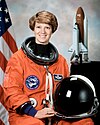 | Eileen Collins | "For her perseverance in the advancement of aviation and aerospace as a teacher, astronaut, and leader, and for serving as an inspiration for all those seeking to break barriers in their field." | [9] |
| 2023 | 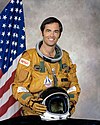 | Robert Crippen | "For his devotion to public service and the advancement of American aerospace; his achievements as an aviator, astronaut, and leader; and his selfless dedication to the future of humankind." | [80] |